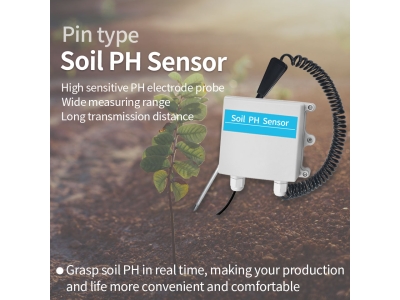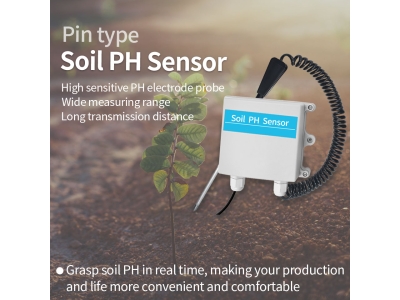In the quest for sustainable and efficient agriculture, farmers are increasingly turning to advanced technologies to maximize crop production while minimizing resource usage. One such technology gaining popularity is the use of soil sensors. These innovative devices provide real-time data on soil conditions, enabling farmers to make informed decisions regarding irrigation, fertilization, and overall crop management. This article explores the benefits of using soil sensors in optimizing crop production, highlighting their role in precise farming, water conservation, nutrient management, and increased profitability.
Precise Farming:
Soil sensors play a crucial role in implementing precise farming techniques by providing accurate and up-to-date information about soil moisture content, temperature, and nutrient levels. With this data, farmers can precisely monitor the condition of their fields and tailor irrigation schedules accordingly. By avoiding overwatering or underwatering, crops receive the ideal amount of moisture for optimal growth, reducing water waste and the risk of water-related plant diseases. Additionally, soil sensors help farmers identify areas within fields that may require specific attention, enabling targeted interventions to address issues such as nutrient deficiencies or pH imbalances.
Water Conservation:
Water scarcity is a significant challenge facing agriculture today. Soil sensors help address this issue by enabling farmers to adopt more efficient irrigation practices. By monitoring soil moisture levels, these sensors provide real-time feedback on the water needs of crops. This data allows farmers to water plants only when necessary, preventing excessive water usage and reducing runoff. As a result, water conservation is enhanced, and farmers can make better use of limited water resources without compromising crop yield or quality.

Nutrient Management:
Proper nutrient management is vital for achieving healthy crop growth and maximizing yields. Soil sensors assist farmers in optimizing fertilizer application by providing insights into nutrient levels and soil composition. By monitoring the nutrient status of the soil, farmers can adjust their fertilizer schedules and formulations to meet the specific requirements of the crops being grown. This targeted approach minimizes nutrient wastage, reduces environmental pollution caused by excess fertilizer runoff, and ensures that plants receive the necessary nutrients for optimal growth, leading to improved crop quality and higher yields.
Environmental Sustainability:
The use of soil sensors promotes environmental sustainability in agriculture. By precisely monitoring soil conditions, farmers can reduce the application of agrochemicals, such as pesticides and herbicides, thereby minimizing their impact on ecosystems. Additionally, by implementing efficient irrigation practices and optimizing nutrient management, the risk of nutrient leaching into groundwater or surface water bodies is significantly reduced. This not only protects the environment but also enhances soil health and maintains the long-term productivity of agricultural land.
Increased Profitability:
Optimizing crop production through the use of soil sensors ultimately translates into increased profitability for farmers. By maximizing resource efficiency, minimizing input costs, and reducing crop losses, farmers can achieve higher yields while maintaining production costs at a manageable level. Soil sensors provide valuable insights that enable farmers to make data-driven decisions, leading to improved crop performance and overall farm profitability. Moreover, by implementing sustainable practices and meeting consumer demands for environmentally friendly produce, farmers can access premium markets and further enhance their financial returns.
Conclusion:
The utilization of soil sensors in agriculture represents a significant step towards sustainable and optimized crop production. By providing real-time data on soil moisture, temperature, and nutrient levels, these sensors enable precise farming techniques, water conservation, efficient nutrient management, environmental sustainability, and increased profitability for farmers. As technology continues to advance, soil sensors are becoming more affordable and user-friendly, making them an accessible tool for farmers of all scales. Embracing this technology holds the potential to revolutionize modern agriculture, allowing us to meet the growing demand for food while preserving natural resources and promoting long-term agricultural sustainability.






